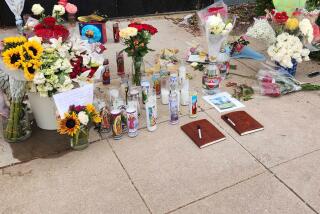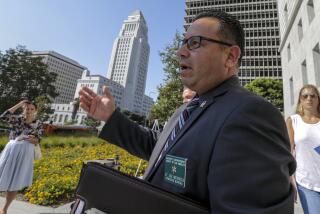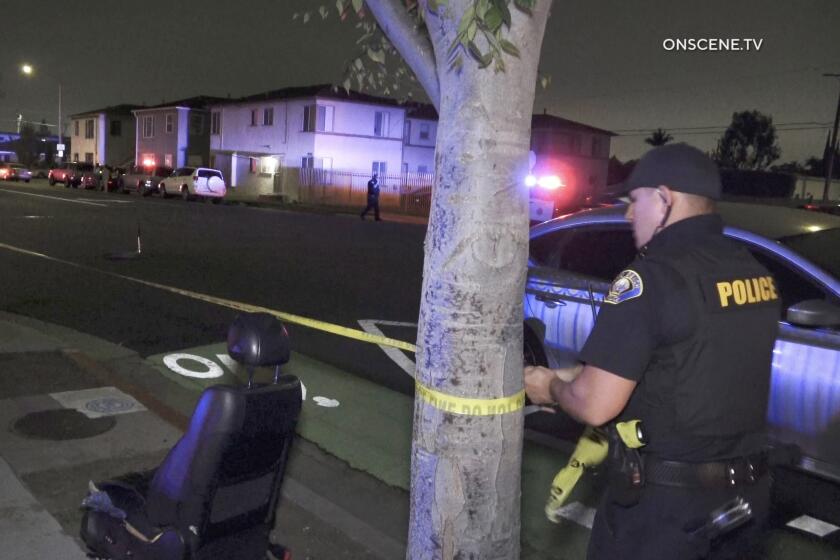Housing Project for Terminally Ill Clears Hurdle : Development: Zoning official approves plans for 23-bed facility in San Pedro for low-income patients suffering from AIDS and other diseases.
A Los Angeles zoning official has approved plans for a 23-bed facility in San Pedro that will provide badly needed housing for low-income people with AIDS and other chronic or terminal illnesses.
The $2.5-million project, approved Thursday by Daniel Green, associate zoning administrator, will require only building permits to be issued for its groundbreaking to occur this fall. The opening of the Mediterranean-style apartment complex is targeted for mid-1993.
“We are very excited,” said the Rev. Kelly Crawford, executive director of the Episcopal Seamen’s Church Institute, one of many San Pedro supporters of the project. “It was a tremendous move forward.”
Crawford said he believes the facility will be the first of its kind in the Los Angeles area and is much needed because of the staggering cost of health care for people with diseases such as AIDS.
The proposed 17-unit apartment complex, to be located adjacent to the Seamen’s Church Institute at 101 W. 11th St., is sponsored by Project New Hope, a nonprofit, non-sectarian foundation established several years ago to advance housing and other projects for people with AIDS.
The foundation’s mission, Crawford said, was assisted with seed money from the Episcopal Diocese of Los Angeles and its Commission on AIDS. The San Pedro project, he added, is the first of three planned in Los Angeles by Project New Hope. The other proposed sites are in West Hollywood and El Sereno.
Last November, the Los Angeles City Council approved a $940,000 loan for the San Pedro project from the city’s Community Redevelopment Agency. That loan was authorized to acquire land for the housing complex and pay its pre-development costs.
At the same time, the council agreed to grant the project a hardship exemption from San Pedro’s interim zoning laws, enacted to curb high-density development in the community pending new zoning regulations.
But the community’s Angst over new multiunit development in residential areas led some to protest the project, fearing it would bring additional traffic and parking problems to San Pedro. Some weeks ago, about 200 residents signed a petition opposing the project.
That opposition, however, never surfaced Thursday during a brief hearing on the project before city zoning administrator Green, who granted Project New Hope a development permit on grounds that it was unlikely to create significant traffic or parking problems for surrounding homeowners. Green came to that conclusion, he said, because the project will serve only the critically ill and disabled, whose confinement and mobility will clearly not create problems for area streets.
Green’s action was supported by Harbor Councilwoman Joan Milke Flores, whose office joined many San Pedro churches and civic groups in endorsing the project.
“These are terminally ill people who, in the few years they have left, should be given care and dignity,” said Mario Juravich, Flores’ San Pedro deputy.
As envisioned, the project will specialize in housing for people with AIDS but will also accommodate the needy suffering from other chronic or terminal illnesses. Sixteen of its 17 rooms will be set aside for low-income people and the other for persons of moderate income.
Unlike a hospice, the facility will not provide medical care but will instead operate as a housing complex where in-home care is the responsibility of the family or friends of those staying at the facility.
The goal of the project, Crawford said, will be to provide shelter for “people who because of their illness find themselves nearly homeless, who have generally lost any kind of income, any kind of insurance and the only thing between them and the streets is this project.”
“It’s tough when you are faced not just with the struggle of an illness but also the struggle of not having resources to find a place to live,” Crawford said. “These folks are just like you and I. They were working before they were struck with illness.”
More to Read
Start your day right
Sign up for Essential California for news, features and recommendations from the L.A. Times and beyond in your inbox six days a week.
You may occasionally receive promotional content from the Los Angeles Times.






